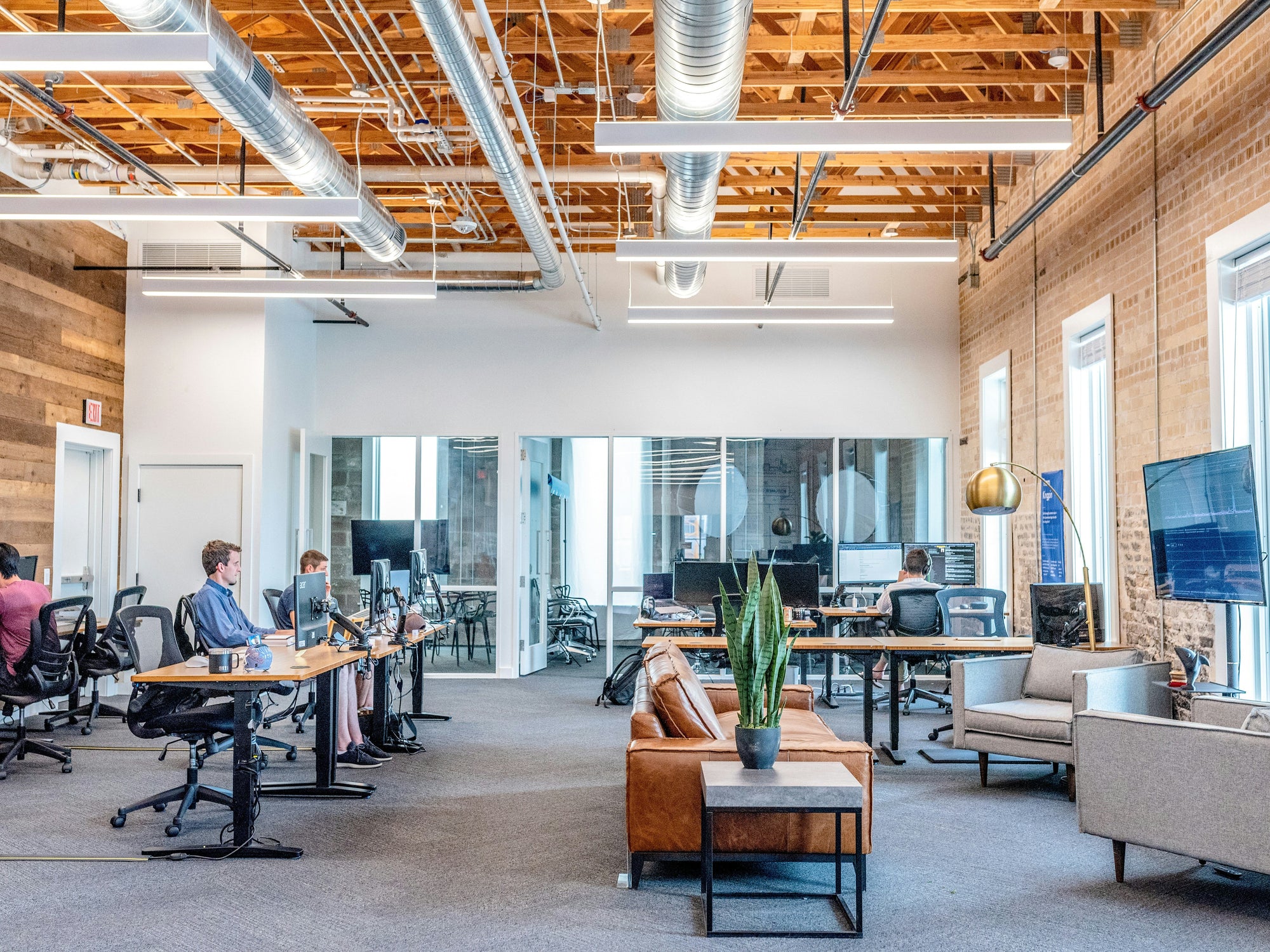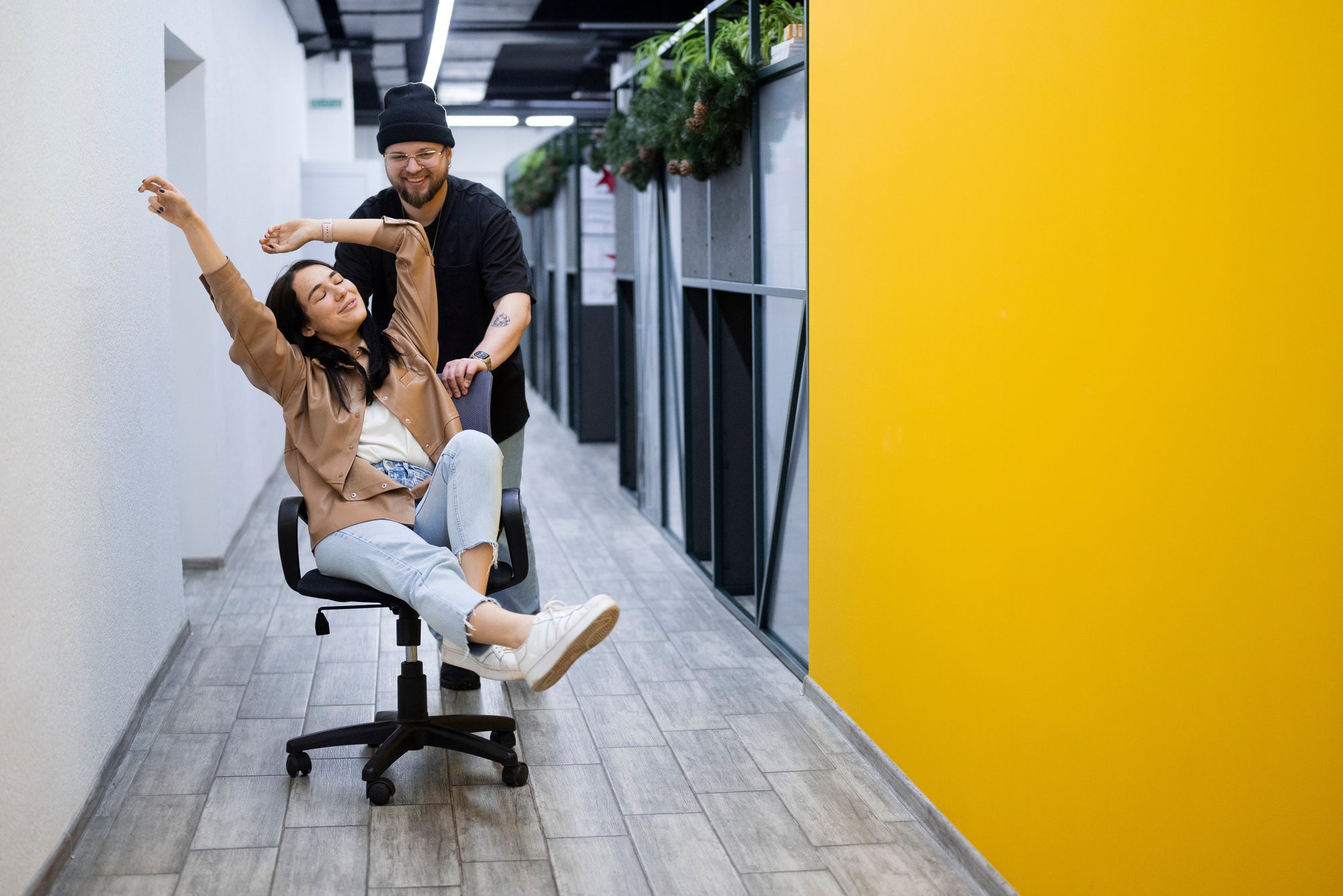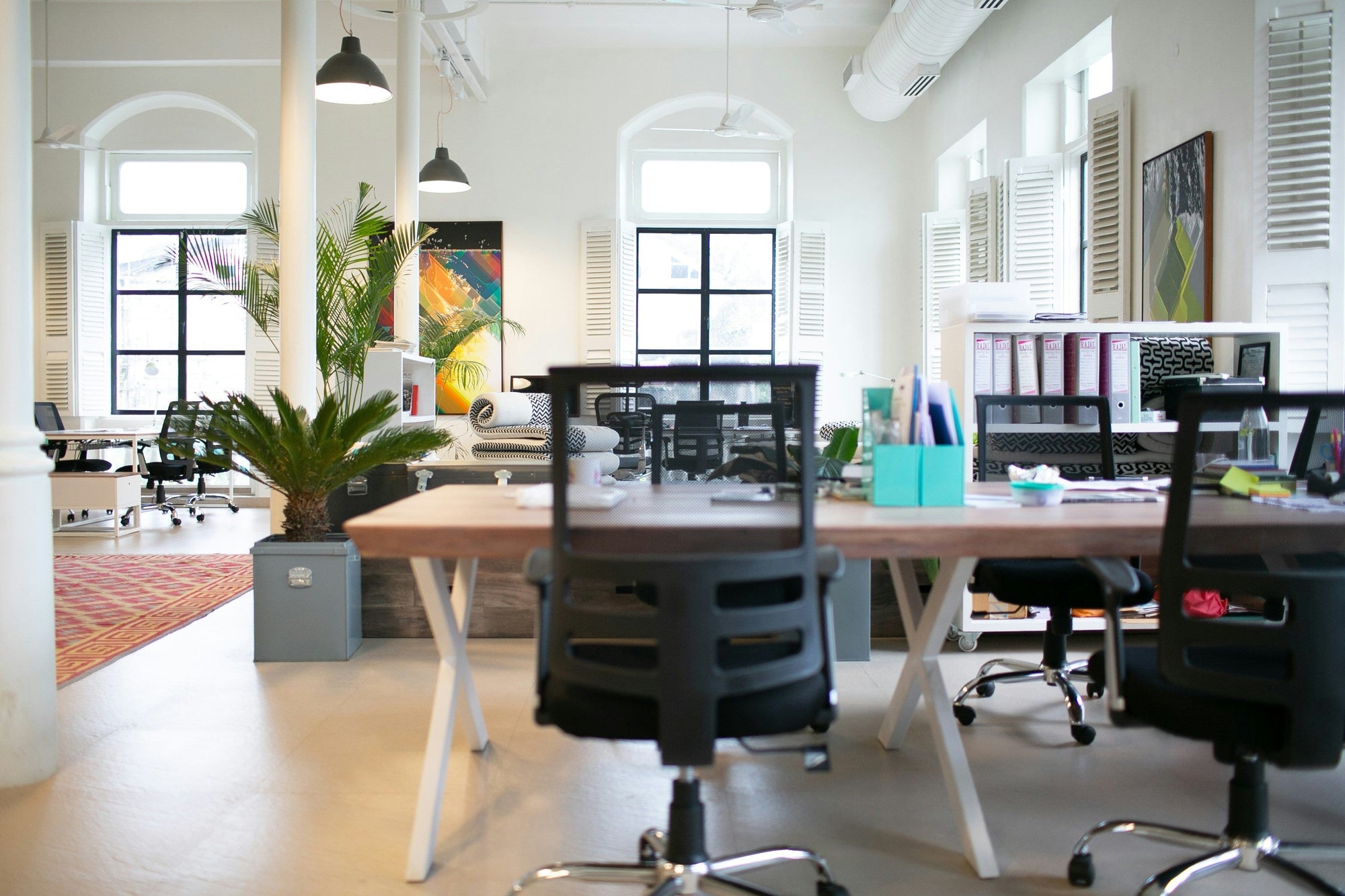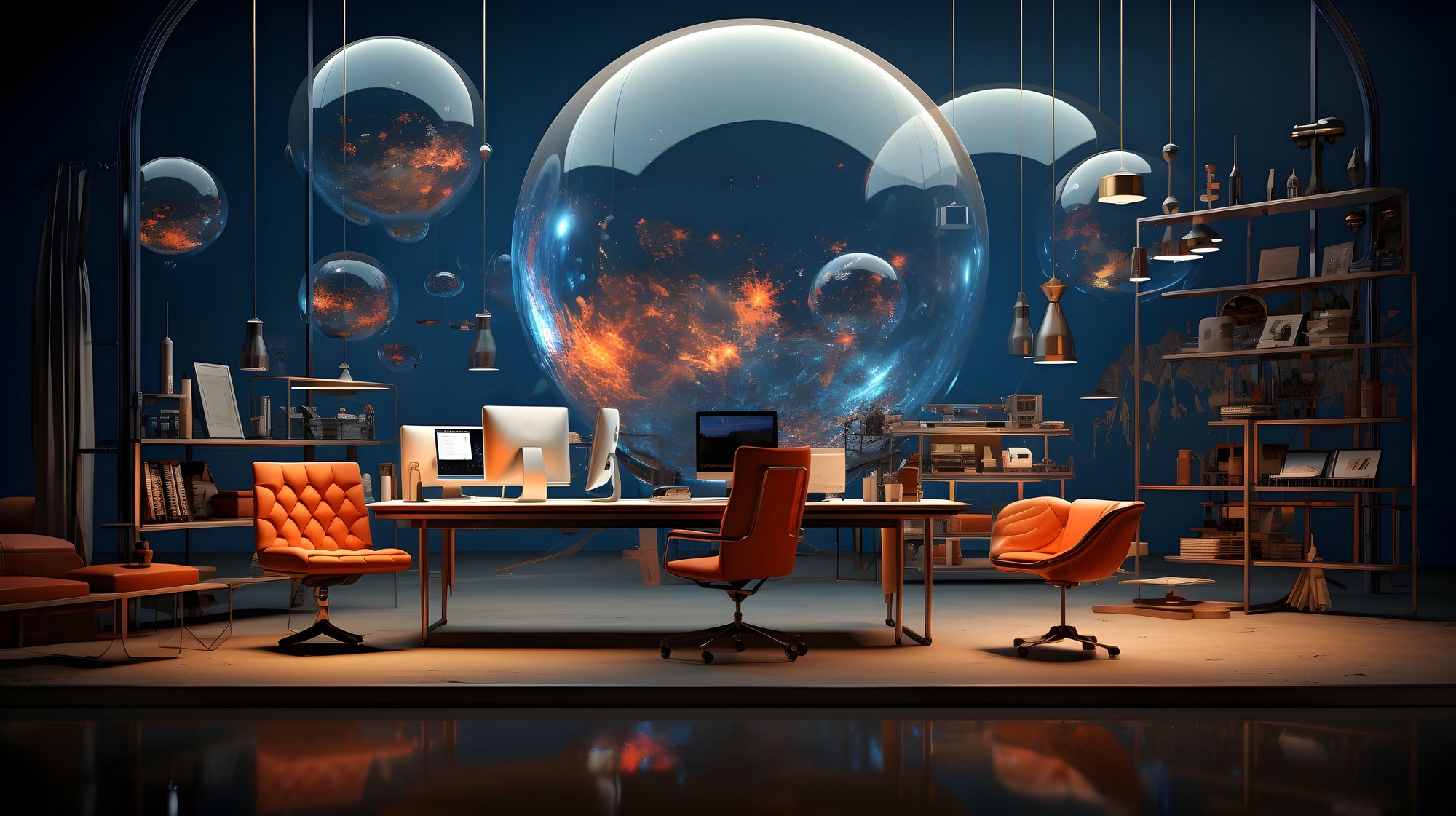Selecting the right furniture for an office is crucial for creating a productive, comfortable, and visually appealing work environment. From ergonomic chairs that support employees’ well-being to modular workstations that adapt to a growing business, the furniture you choose reflects your company’s culture, enhances productivity, and ensures employees feel valued. Here’s an in-depth look at the most desirable types of office furniture and what makes each one essential in today’s workspace.
1. Ergonomic Chairs
Why They're Desirable: Ergonomic chairs are specifically designed to support the natural curvature of the spine and improve posture, significantly reducing the risk of musculoskeletal disorders. Given that many employees spend hours at their desks, having a supportive chair can prevent back pain, reduce stress on the body, and boost overall comfort.
Key Features:
- Adjustable seat height and depth: Allows for customization to fit each user’s height, ensuring feet are flat on the floor for proper leg support.
- Lumbar support: Essential for maintaining the spine’s natural curvature, reducing strain on the lower back.
- Swivel base and wheels: Promotes ease of movement, allowing employees to reach objects without unnecessary stretching.
- Adjustable armrests: Provides support to the shoulders and neck, reducing upper body strain.
- Breathable materials: Mesh backrests or other breathable materials help regulate body temperature and add to comfort.
Additional Benefits: Studies have shown that employees who use ergonomic chairs report less discomfort, fewer breaks, and improved concentration. For companies, investing in ergonomic furniture can reduce absenteeism and healthcare costs, further underscoring its long-term value.
2. Standing Desks
Why They're Desirable: Standing desks allow employees to alternate between sitting and standing, reducing the negative health impacts of prolonged sitting. Research indicates that standing desks can enhance mood, reduce back pain, and improve energy levels, which are essential for maintaining productivity throughout the day.
Key Features:
- Adjustable height: Most standing desks allow easy height adjustment, enabling users to switch between sitting and standing at regular intervals.
- Sturdy construction: A strong frame supports monitors, laptops, and other office equipment without wobbling.
- Large workspace: Standing desks come in various sizes to accommodate dual monitors or other accessories.
- Cable management solutions: Integrated cable organizers reduce clutter, ensuring a tidy workspace.
Additional Benefits: Alternating between sitting and standing has been linked to reduced risks of heart disease, diabetes, and obesity. Providing employees with standing desks not only addresses their health needs but also demonstrates a commitment to their well-being, which can improve job satisfaction.
3. Modular Workstations
Why They're Desirable: Modular workstations offer flexibility that suits the evolving needs of dynamic office spaces. These customizable setups can be reconfigured as the team expands, allowing for smooth adjustments without the need for additional furniture purchases. This adaptability is especially valuable for growing businesses or those frequently rearranging their layouts.
Key Features:
- Interchangeable components: Modular systems often come with adjustable parts, such as attachable desks, shelves, and screens.
- Easy assembly and reconfiguration: Most modular furniture is designed to be assembled, disassembled, and moved with ease.
- Built-in storage options: Many modular desks and workstations include filing drawers, storage shelves, and organizers.
- Collaborative design: Modular workstations can be arranged in pods or clusters, which promote teamwork and facilitate open communication.
Additional Benefits: Modular furniture reduces costs over time, as it adapts to different layouts and needs. Rather than purchasing entirely new furniture as the office grows, companies can rearrange modular setups, making it a practical and cost-effective solution.
4. Collaborative Furniture
Why They're Desirable: Collaborative furniture is central to open-office designs, where teamwork and creativity are encouraged. From large communal tables to comfortable seating arrangements, collaborative furniture promotes social interaction and idea-sharing among employees.
Key Features:
- Large tables: Big, open tables accommodate team meetings, brainstorming sessions, and group discussions.
- Comfortable seating: Soft seating, such as couches or lounge chairs, encourages employees to relax and communicate more freely.
- Whiteboards or glass boards: Built-in writing surfaces help teams brainstorm, share ideas, and capture notes during meetings.
- Flexible seating arrangements: Moveable chairs, benches, and stools allow the space to be quickly rearranged.
Additional Benefits: A collaborative office layout can increase employee engagement, foster innovation, and enhance a sense of community within the workplace. Employees feel more connected and involved, leading to better team morale and, ultimately, a more productive work environment.
5. Storage Solutions
Why They're Desirable: A clutter-free workspace leads to a clear mind and greater productivity. Efficient storage solutions help organize paperwork, supplies, and personal items, keeping everything accessible yet out of sight. Proper storage solutions can also improve the overall aesthetics of the office.
Key Features:
- Filing cabinets: Secure storage for documents, files, and sensitive information.
- Shelving units: Open shelving allows easy access to frequently used items, while closed shelving provides concealed storage for less attractive items.
- Mobile storage carts: Movable carts are ideal for multi-use spaces or items that need to be shared among departments.
- Hidden storage in desks and tables: Desks with built-in drawers or hidden compartments keep essential items within reach without creating visual clutter.
Additional Benefits: Organized storage systems allow employees to access necessary materials easily, reducing time wasted searching for items. This leads to increased productivity, as well as a cleaner, more professional office appearance that enhances client perceptions.
6. Reception Furniture
Why They're Desirable: The reception area is the first space clients, vendors, and visitors encounter, making it crucial for setting the tone of your business. Stylish and comfortable reception furniture reflects a company’s brand and values, leaving a positive impression on everyone who walks through the door.
Key Features:
- Comfortable seating: Soft chairs, couches, and benches allow visitors to wait in comfort.
- Attractive reception desk: A welcoming reception desk is both functional and visually appealing, often incorporating storage for administrative tasks.
- Coffee tables and side tables: Tables in the reception area provide convenience for visitors and add to the overall aesthetics.
- Decorative elements like plants and artwork: Adding decor enhances the space, creating an inviting and professional environment.
Additional Benefits: Investing in high-quality reception furniture shows visitors that your business values attention to detail and client comfort. It helps set the tone for a positive experience and can help improve your company’s reputation from the first impression.
7. Conference Room Furniture
Why They're Desirable: Conference rooms are essential for meetings, presentations, and brainstorming sessions. The right furniture facilitates effective communication and collaboration, ensuring participants feel comfortable and focused.
Key Features:
- Large conference tables: Tables that comfortably accommodate groups for formal meetings and presentations.
- Comfortable chairs: Ergonomic seating keeps participants comfortable, even during lengthy discussions.
- AV equipment integration: Tables designed with cable ports and power outlets make it easy to set up laptops, projectors, and other tech devices.
- Whiteboards and presentation tools: Essential for sharing information visually, facilitating note-taking, and enhancing engagement.
Additional Benefits: A well-furnished conference room can make meetings more productive and efficient, allowing participants to focus on the agenda without distractions. The right setup encourages participation and fosters a professional image for external clients or partners.
Factors to Consider When Choosing Office Furniture
Selecting the right furniture involves more than just aesthetic preference. Here are critical factors to consider for making the best choices:
1. Comfort and Ergonomics
Prioritize furniture that promotes comfort and reduces the risk of health issues. Ergonomic furniture is vital for creating a healthy workspace that supports employees’ physical well-being.
2. Functionality
Choose furniture that aligns with your office's purpose and layout. For instance, modular workstations can add flexibility, while dedicated storage keeps items organized.
3. Flexibility
Opt for furniture that can adapt to changing needs. Adjustable desks, modular furniture, and versatile storage options ensure that your workspace can evolve with your company’s requirements.
4. Aesthetics
Your office furniture should reflect your company’s brand identity. A cohesive aesthetic creates a welcoming and professional atmosphere, leaving a positive impression on clients and staff alike.
5. Budget
Balance quality and cost to find durable furniture that fits within your budget. Quality furniture is a worthwhile investment, as it can last longer and provide better support to employees.
The Role of Office Furniture in Enhancing Productivity and Employee Well-being
The right office furniture can have a profound impact on productivity and morale. Here’s how:
1. Boosting Physical Health
Ergonomic furniture reduces physical strain and the risk of injury, which can decrease absenteeism and increase employee satisfaction.
2. Encouraging Collaboration
Collaborative furniture promotes open communication, enabling employees to share ideas and work as a team more effectively.
3. Supporting Focus and Concentration
Designated workstations with proper storage solutions create a structured environment where employees can focus without distractions.
4. Reflecting Company Culture
The furniture you choose communicates your brand's values and culture. For example, modern and minimalist furniture might reflect an innovative, forward-thinking brand, while traditional furniture could convey reliability and stability.
Trends in Modern Office Furniture
Office furniture trends are continually evolving to keep up with the changing nature of work. Here are a few popular trends shaping today’s office furniture choices:
1. Sustainable Materials
More companies are choosing eco-friendly furniture made from sustainable, recyclable, or reclaimed materials. This choice reflects corporate social responsibility and appeals to employees who prioritize environmental sustainability.
2. Technology-Integrated Furniture
Furniture with built-in power outlets, charging stations, and cable management is becoming increasingly popular to support tech-dependent work environments.
3. Flexible Layouts
With the rise of remote work and hybrid models, many companies are favoring flexible furniture that allows for rapid reconfiguration, adapting to both in-office and remote collaboration.
4. Aesthetic Minimalism
Simple, clean designs continue to dominate office furniture trends. Minimalist furniture not only enhances the modern look of an office but also minimizes distractions, supporting a more focused work environment.
5. Biophilic Design
Furniture that incorporates natural elements, such as wood finishes, greenery, and natural light, promotes a calm, balanced workspace that benefits mental well-being.
Conclusion
The most desirable office furniture combines comfort, functionality, and style to create a workspace where employees can thrive. Ergonomic chairs, standing desks, modular workstations, collaborative furniture, efficient storage solutions, stylish reception furniture, and well-equipped conference rooms all play vital roles in a productive, engaging, and health-conscious office environment. By carefully selecting the right pieces, businesses can boost productivity, improve employee well-being, and create a lasting impression on visitors and clients alike.
Investing in quality office furniture that meets the specific needs of employees and aligns with the company’s culture is a strategic decision. As workspaces continue to evolve, prioritizing adaptable, ergonomic, and aesthetically pleasing furniture will ensure that your office remains functional and inviting for years to come.







